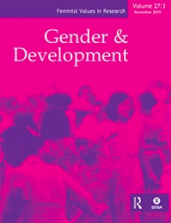Social and feminist design in emergency contexts: the Women’s Social Architecture Project, Cox’s Bazar, Bangladesh

Overview
The rapid influx of Rohingya refugees into Cox’s Bazar, Bangladesh, has led to the formation of huge camps, built on difficult terrain, short of space and with high population density. All these factors present numerous challenges to agencies seeking to provide latrines, water points, and bathing facilities. Feedback gathered from women and girls highlighted significant challenges around access, safety, privacy, and dignity, including management of personal hygiene and menstruation. Within the humanitarian community, site planning and WASH (water, sanitation and hygiene) infrastructure planning/design processes have mainly been dominated by male architects and engineers, often with gendered assumptions about the user. Acknowledging these challenges, Oxfam implemented the Women’s Social Architecture Project to work with women and adolescent girls, and female architects with a background or interest in social or feminist design and architecture, to add a different perspective into the design and siting of WASH facilities. The project has consisted of formative research with Rohingya women and girls, and design workshops with architects in which Rohingya women have co-created designs that tackle the issues they face regarding WASH facilities. This article provides an account of the progress to date, together with feedback from women and girls and the WASH Sector in Cox’s Bazar ahead of the final completion of the project in June 2019.
Additional details
Author(s)
How to cite this resource
Citation styles vary so we recommend you check what is appropriate for your context. You may choose to cite Oxfam resources as follows:
Author(s)/Editor(s). (Year of publication). Title and sub-title. Place of publication: name of publisher. DOI (where available). URL
Our FAQs page has some examples of this approach.


